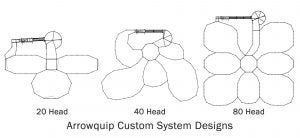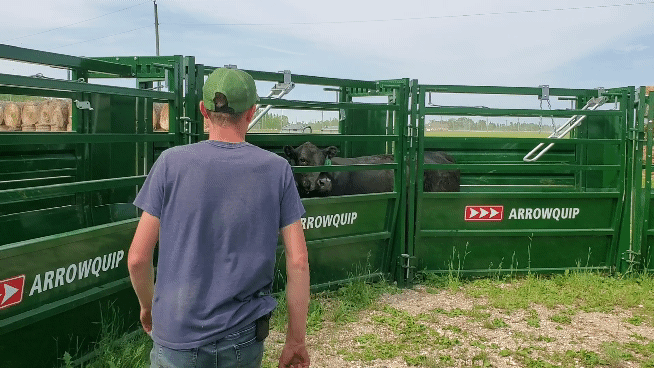When you talk about cattle flow, many ranchers automatically think of their working equipment and squeeze chute as the root of the problem. The hold-ups that occur when cows refuse to enter the chute can cause major processing delays and raise stress levels for all parties involved, but often the delays seen at the chute are merely a symptom of a larger issue. While a poorly designed squeeze chute or alley that is too wide may be the most obvious problem you’re facing, replacing them will not fix the way cattle flow through your working facilities if there is another issue at hand.
The way that we handle cattle in the outer pens, and even in the field before bringing them into the pen, can have a dramatic impact on how cattle flow through the system and respond to handling. As they say — if they come in hot, they stay hot! As such, it is our job as handlers to keep cattle calm, cool and collected as they enter the pens, so they are easier to process in the chute.
Now, how can you create better cattle flow from the get-go? Here are four simple tips that can help.
1. Bring them into the pens strategically.
- Whether you are working cattle on foot, horseback, with ATVs, or with cattle dogs, it’s important to keep cattle stress in mind from the moment you start rounding them up.
- Using pressure zone cattle handling techniques before entering the pens gets cattle comfortable with the pressure you are putting on them.
- Be sure to release the pressure you are putting on cattle at the right time as well. Low-stress cattle handling does not mean low-pressure cattle handling, but it does mean letting off the pressure when cattle are moving properly.

2. Acclimate cattle to your handling system before you work them.
- Hands down, the easiest way to create draw through your handling system is to let your cattle become acclimated to it.
- How do you acclimate cattle?
- Run a group of cattle through an open system and guide them from the pens all the way through the chute
- Do not catch or stop cattle at any point as they go through the system
- Repeat 3 to 5 times with the same group of cattle
- This allows your cattle to become familiar with your handling system, where they need to go, and minimizes resistance to being worked because they have a positive experience in the handling equipment.
- Mix the group of cattle that have been acclimated into your other groups, so they are spread out and can help guide the cattle who have not been acclimated through!
3. Sort smarter, not harder.
- We have all heard the phrase “Work smarter, not harder” at some point, but too few cattle handlers believe that this applies to the kind of work they do.
- Sorting cattle is a high-stress situation for cattle and handlers alike, so eliminating stress and headaches at this point is crucial to keeping cattle calm as they are worked.
- Sorting cattle does not have to be a chore. Whether you prefer pre- or post-chute drafting, there are a variety of options available for handlers of any experience level.
- For experienced stockmen and cattle producers, a Draft Pound is the easiest way to sort cattle in the outer pens. This allows you to sort off a group of cattle in many directions at a low-stress point in the system.
-
- For pre-chute sorting in the alley or sorting cattle in multiple directions, pairing Cattle Sorting Alleys with Adjustable Cattle Alleys is a safe option for less experienced handlers, but can be more challenging to sort cattle in the correct groupings.
- A Draft Module connects to the end of your chute, and allows you to sort cattle in three to five pens. The Draft Module can be used in two ways — before you work cattle with an open system leading to the draft area, or after you work cattle as a way to sort groups off based on weight, etc.
- Many handling systems include all three options, so you can sort in multiple ways depending on the task at hand.
- Sorting cattle into proper groups while keeping the bunt order within the herd in mind can dramatically impact flow and lead to an easier experience working livestock.
4. Go towards the light!
- Cattle love light, and always want to move towards it.
- Smart cattle handling systems are designed to let cattle see light in the direction they want to go, which naturally draws cattle in that direction.
- Avoid blinders and equipment that is fully sheeted on both sides.
- Instead, opt for handling equipment that lets light filter through, and is designed to let cattle see handlers for optimal use of point of balance handling techniques.
- Be cautious with overhead lighting in indoor facilities, as it may cast shadows and cause cattle to baulk.

When it comes to handling cattle efficiently, flow is the most important thing. The way your cattle move from pen to pen, and later tub to chute, can make or break the way that your day goes. Use these tips to make handling your cattle a little easier, so that you can have more time back in your day.
Looking for more cattle handling tips and tricks? Visit arrowquip.com/cattle-handling.
This article was published on behalf of Arrowquip.


